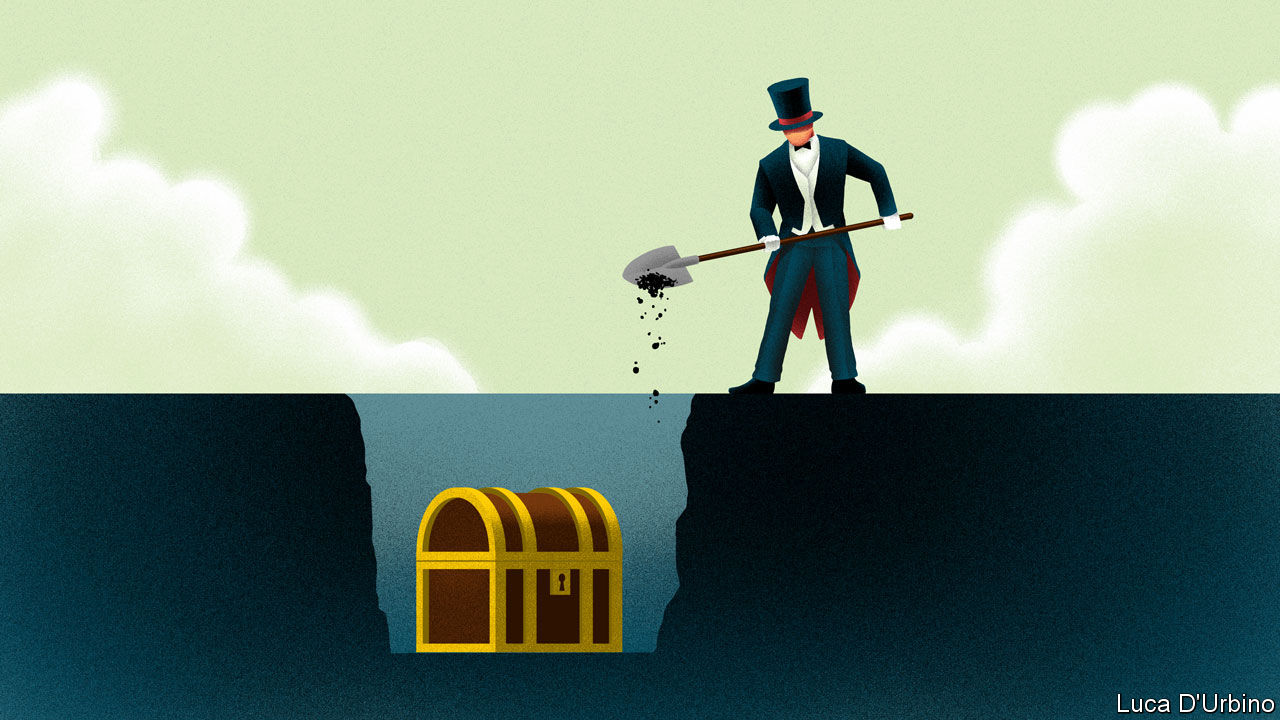
On View
It Took 450 Years to Get the First Pieter Bruegel the Elder Retrospective. It Will Probably Never Happen Again. Here’s Why
Inside how a show that can truly be called once-in-a-lifetime came together.
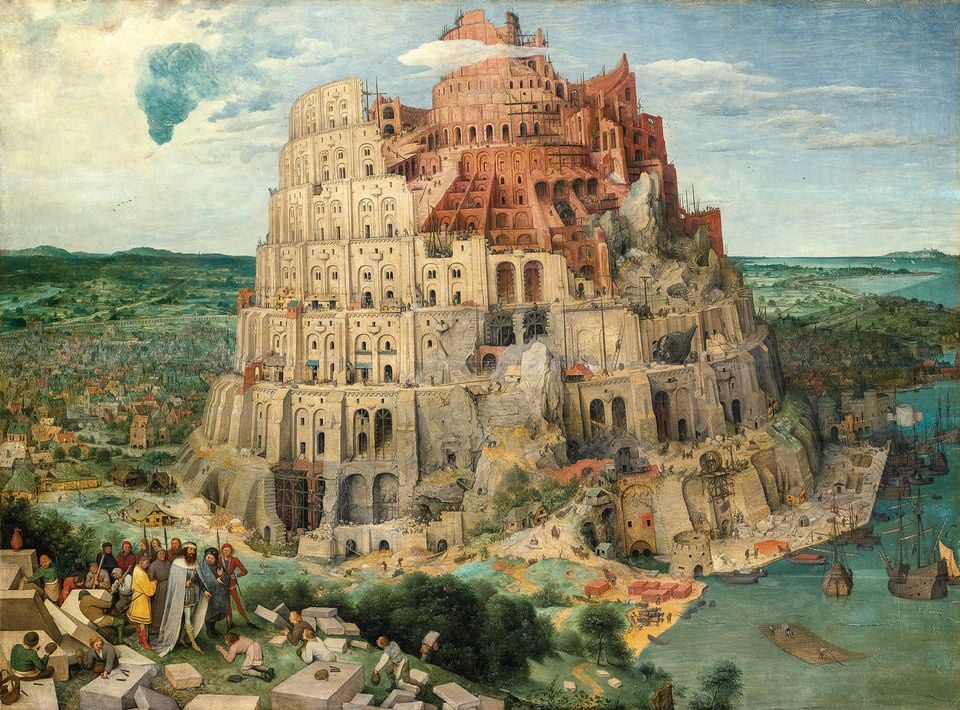
Last month, the Kunsthistorisches Museum Vienna opened “Bruegel,” billing it in their curatorial statement as “an absolutely unique event, and a ‘must-see’ for every art lover.” Museums are understandably prone toward a bit of hyperbole when it comes to promoting their hoped-for blockbusters, but when it comes to Pieter Bruegel the Elder (ca. 1525–1569), you can actually believe the hype.
Here, we break down how the museum managed to make it happen, why it was so remarkable that they pulled it off, and what makes the show so special.
Beyond Rare
“Pieter Bruegel the Elder was only active as an artist for 18 years,” Sabine Haag, general director of the Kunsthistorisches Museum, told artnet News. “He died very young.”
Because Bruegel was only in his forties at the time of his death, there are only about 40 paintings, 60 drawings, and 80 prints known to be by his hand. His works on panel are the most rare and the most celebrated, so museums lucky enough to own one are loathe to part with them.
“They are the gems of every collection,” said Haag, who was inspired to stage the Bruegel show as part of a larger initiative to highlight the deep Old Masters holdings at the Kunsthistorisches, begun after she was promoted to her current post in 2009.
Luckily, the institution had a considerable head start for the show, with the world’s largest collection of works by the great artist, with 12 works on panel all inherited from the Hapsburg royal collection. (No one else has more than three.) The city of Vienna also boasts six Bruegel drawings at the Albertina Museum.
“With this core group of originals by Pieter Bruegel the Elder, it was obvious that such a big and very ambitious exhibition project could only take place in the Kunsthistorisches,” said Haag. Even so, there was no guarantee that the project would come together.
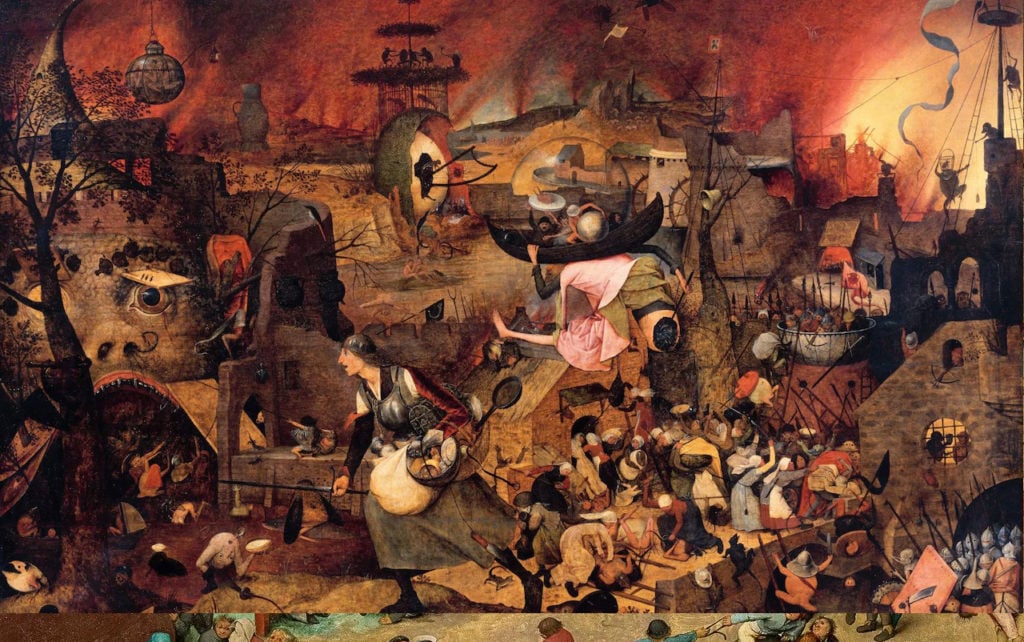
Pieter Bruegel the Elder, Dulle Griet (1562). Courtesy of the Museum Mayer van Den Bergh.
Succeeding Where Others Have Failed
Believe it or not, this is the first time a museum has managed to organize a monographic exhibition of the Dutch artist—and the show also marks the 450th anniversary of the Old Master’s death! It’s not that no one has tried, either: A half century ago, a planned exhibition marking 400 years since Bruegel’s death was cancelled when the necessary loans could not be secured.
The curators were well-aware of this previous failure. Nevertheless, with the commemorative year coming up, said Haag, “we wanted to take the chance and invite other collections and institutions that own originals by Pieter Bruegel to put together this exhibition, knowing that this was the best and probably only time to do something like this.”
Given the rarity of the works, the insurance on the show is astronomical. No expense could be spared, including specially designed crates made to measure for each loaned work. “We have twice the budget that we would normally use for an exhibition,” Haag admitted.
Convincing partner institutions to participate was even more difficult than usual because the museum could not give a Bruegel in a return as a counter-loan, as they might for a broader group show. “We had to offer something in return,” said Haag.
That something ended up being a chance to participate in the museum’s massive Bruegel restoration and research project, which has been in the works for six years, and includes an impressive website full of high resolution images and infrared and X-ray scans of the works.
It’s an incredible scholarly effort, supported by a Getty grant, that is still ongoing—some lending museums did research on their own, while others allowed their painting to be examined at the Kunsthistorisches facilities immediately preceding or following the exhibition.
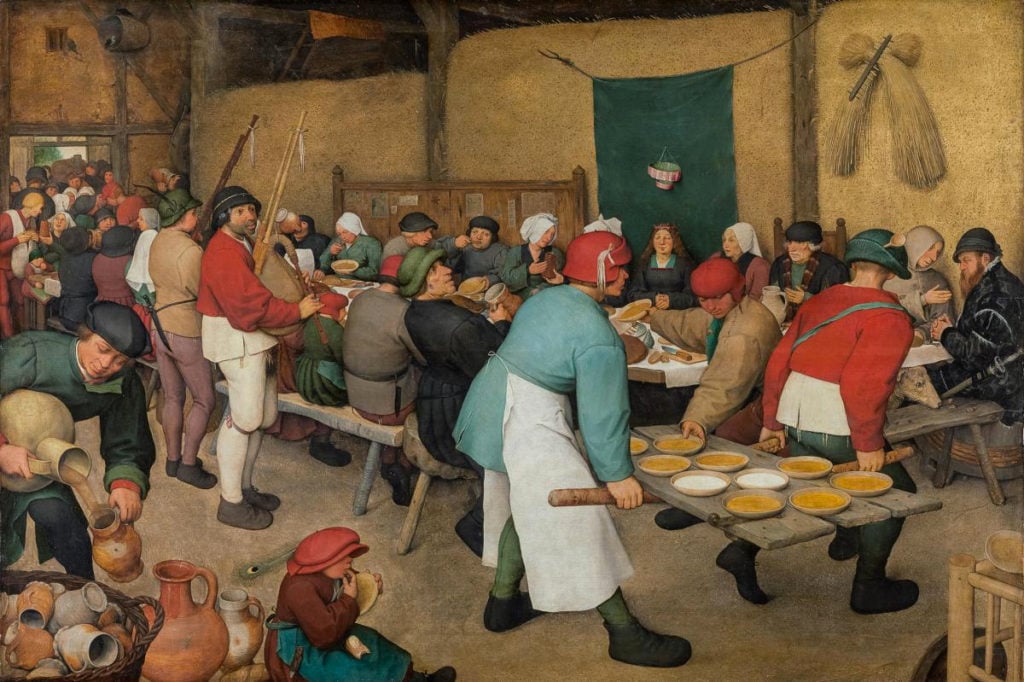
Pieter Bruegel the Elder, Peasant Wedding (1567). Courtesy of the Kunsthistorisches Museum Vienna.
Looking Over Bruegel’s Shoulder
Remarkably, the Kunsthistorisches has brought together almost three quarters of the artist’s extant works, with about 90 in total spanning the full length of his career. Some of the pieces on loan for the occasion have never left their home institutions, so it’s easy to understand why no one has been able to pull off a major Bruegel show before.
A big part of the reason is that works on panel are incredibly fragile, which makes travel a big risk. The seams between the different panels can buckle, damaging the paint, and the centuries-old wood is prone to cracking and warping—wood expands and contracts naturally when exposed to changing temperatures and humidity, creating a considerable challenge for conservators.
Ahead of the show, two of the loaned panels also underwent cleaning and conservation: The Triumph of Death (after 1562), from the Prado in Madrid, and Dulle Griet (1563), from the Museum Mayer van den Bergh in Antwerp. After taking a closer look at the newly cleaned View of the Bay of Naplesfrom the Galleria Doria Pamphilj in Rome, the Kunsthistorisches was able to confirm once and for all the painting’s attribution as a real Bruegel.
In addition to preserving Bruegel’s work for future generations, the technical analysis being done by the Kunsthistorisches has also added to art historians’ understanding of the artist, bringing to light the underdrawings and revisions made during the works’ creation. “We wanted,” said Haag, “to look over Bruegel’s shoulder to see how he worked and how his compositions came about.”
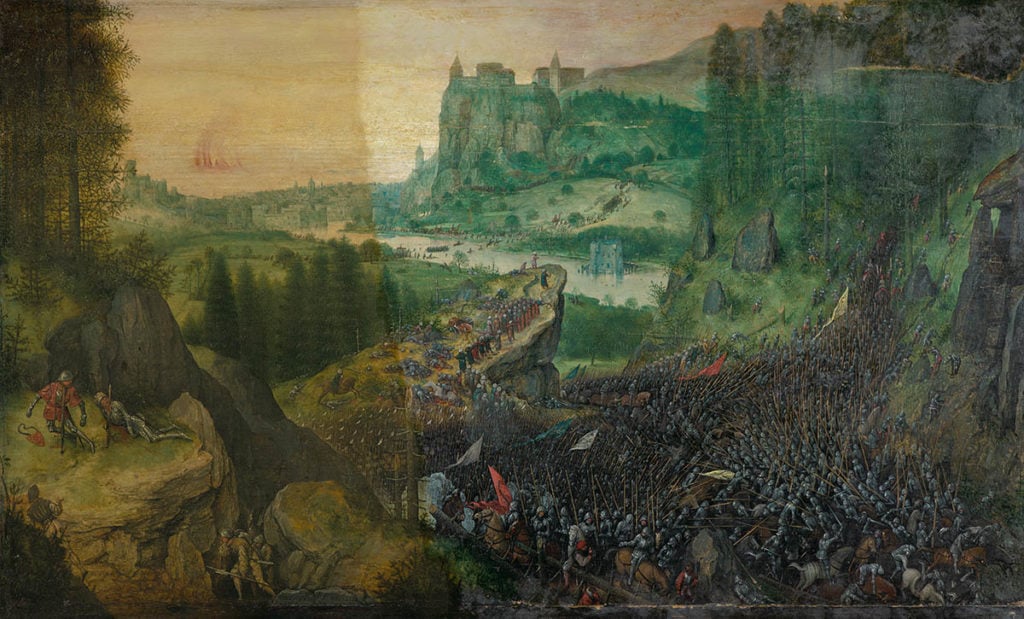
Pieter Bruegel the Elder, Suicide of Saul (1562), in the process of being cleaned. Courtesy of the Kunsthistorisches Museum, Vienna.
Missing Pieces
Despite the Kunsthistorisches’s best efforts, not everyone came on board for the show. “We had to accept, of course, that some of the panels could not travel,” Haag admitted.
That included the famous Netherlandish Proverbs (1559) from Berlin’s Gemäldegalerie. A loan from Hungary, The Sermon of St. John the Baptist (1566), fell through at the last minute, leaving a blank space on the exhibition wall.
A particularly notable hole is the absence of one of the five existing paintings from Bruegel’s series “Seasons,” which illustrates the course of the year. The Kunsthistorisches owns three of the extant panel paintings, and the Lobkowicz Collections in Prague agreed to contribute theirs, Haymaking, which depicts the months of June and July.
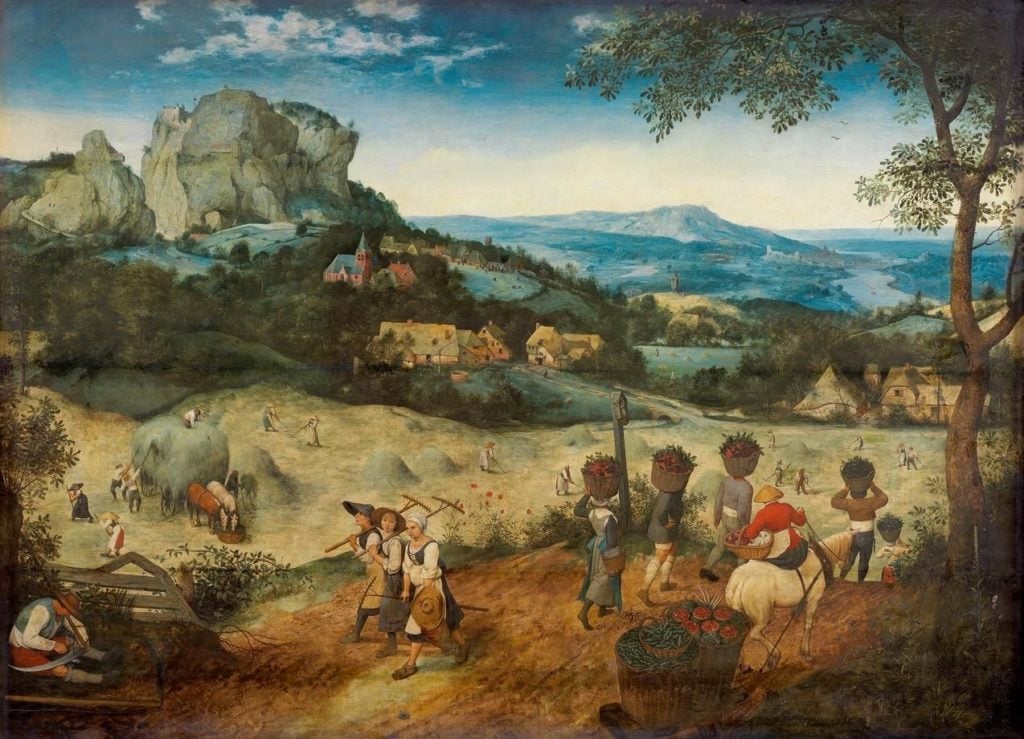
Pieter Bruegel the Elder, The Haymaking (1565). Courtesy of the Lobkowicz Collection, Prager Burg.
But New York’s Metropolitan Museum of Art dubbed their work in the series, The Harvesters, too fragile to make the trip. (A sixth, Spring, is believed to have been destroyed.)
Still, plenty of important pieces did make the trip, such as the National Gallery in London’s The Adoration of the Magi (1564) and Royal Museums of Fine Arts in Brussels’s Winter Landscape With a Bird Trap (1565). The Kunsthistorisches is able to show its own The Tower of Babel alongside the version from the Boijmans van Beuningen Museum in Rotterdam for the first time. Altogether, there are an impressive 27 panel paintings in the show.
More to Learn
The show is now open, but that doesn’t mean the museum’s work is done. With so many Bruegels on view in the same place, researchers have a rare opportunity to compare his work in the flesh, making in-person observations that will almost certainly reveal more new insights into the artist’s career.
“Pieter Bruegel was a revolutionary. He really changed landscape painting,” said Haag, who hopes the show will broaden the public’s understanding of an artist who painted religious scenes, seascapes, and other works beyond the peasant pictures for which he is perhaps best known. “He was such a wonderful storyteller. His paintings are full of details, and are a very good source of [what life was like in] the time of Pieter Bruegel.”
Anything gleaned by the ongoing studies will be added to the museum’s Bruegel website, which the museum sees not as an online version of the exhibition, but as an important resource to be used in conjunction with a visit to the show itself.
“Of course, we want everyone to come to Vienna to see the original art,” said Haag, even while acknowledging that some people who want to visit won’t be able to do so. “It’s a once in a lifetime moment to see this many works by Pieter Brugel the Elder one place.” Not even the artist himself saw this many of his own works side by side, she contends.
“I don’t know whether it will ever be possible again,” Haag added. “Certainly not in our generation, and probably not the next.”
See more paintings from the show below.
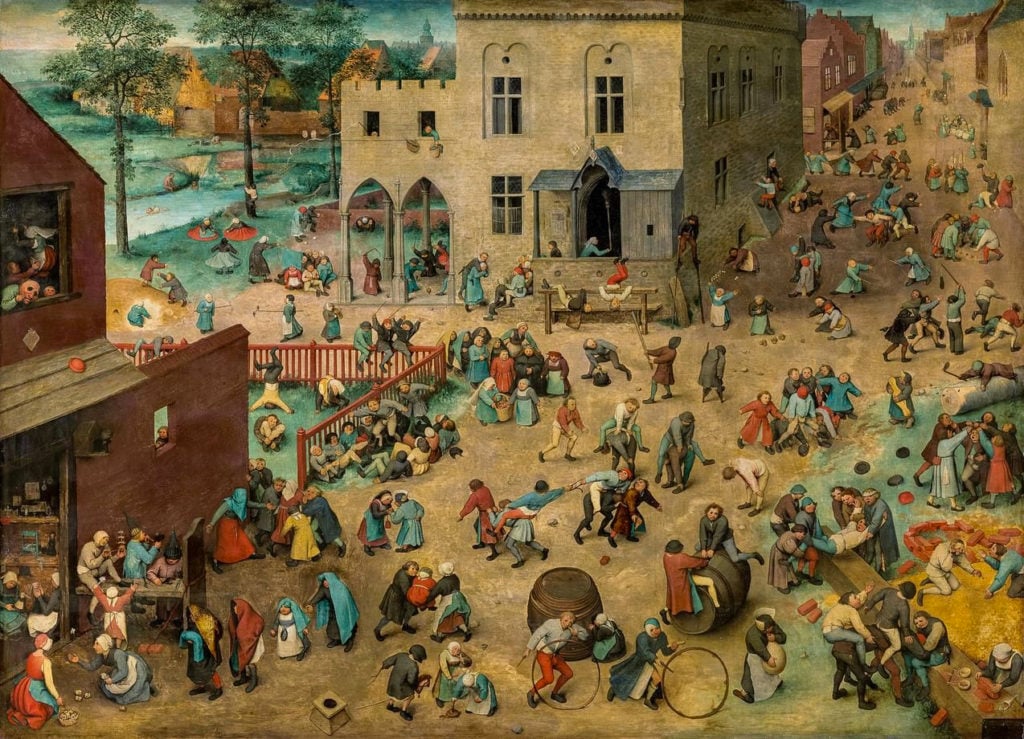
Pieter Bruegel the Elder, Children’s Games (1560), detail. Courtesy of KHM-Museumsverband.
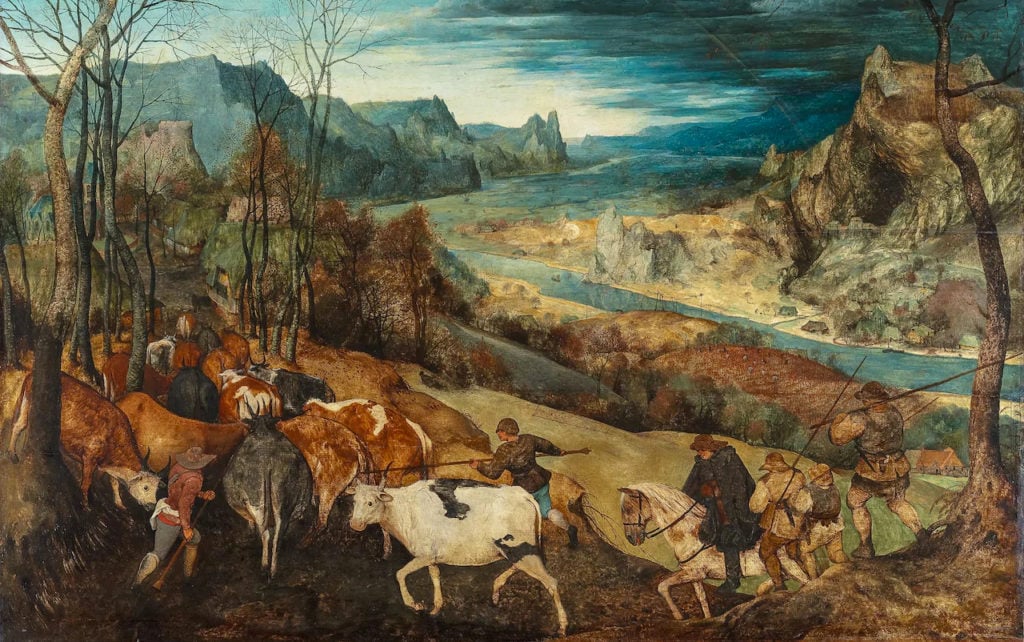
Pieter Bruegel the Elder, Return of the Herd (1565). Courtesy of KHM-Museumsverband.
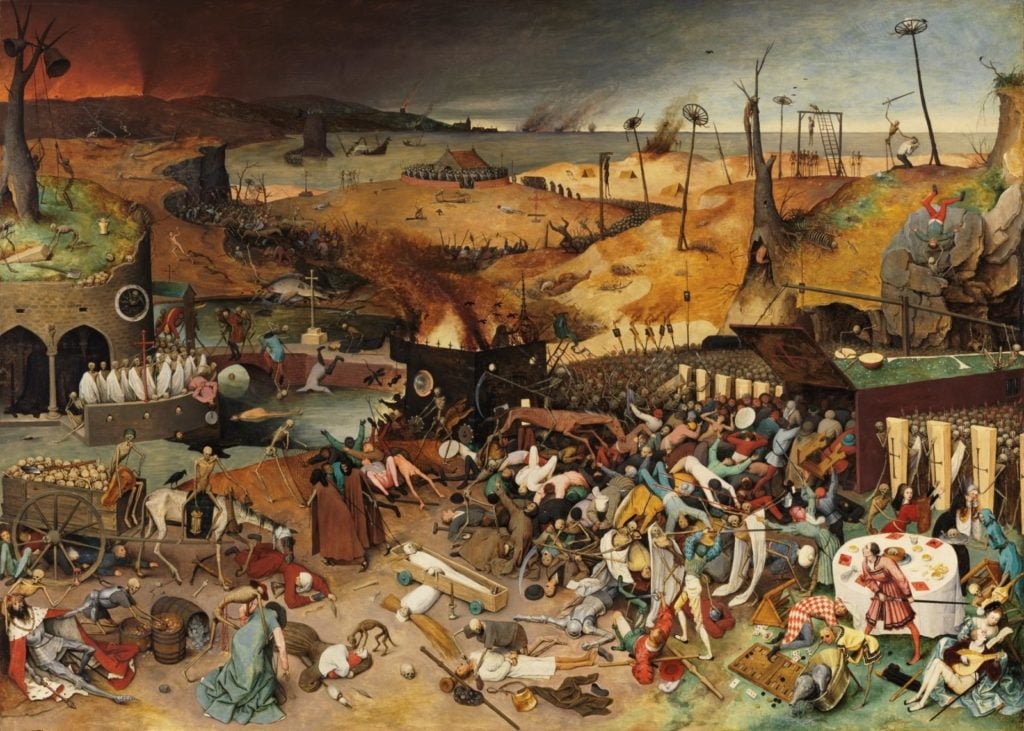
Pieter Bruegel the Elder, The Triumph of Death (after 1562). Courtesy of the Prado, Madrid.
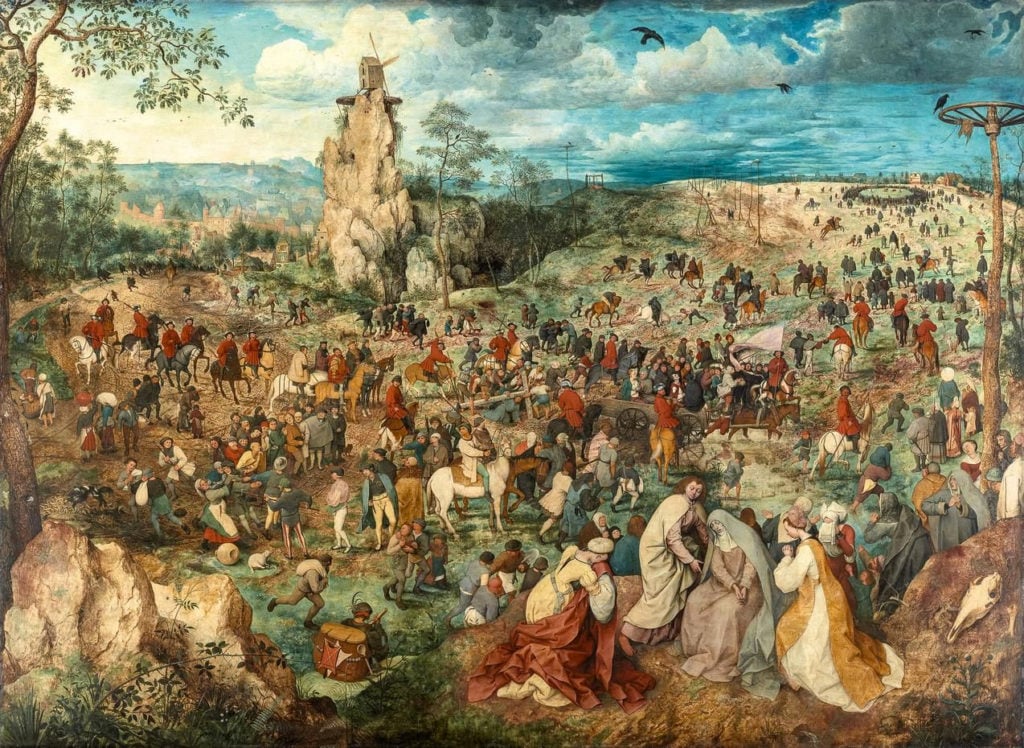
Pieter Bruegel the Elder, Christ Carrying the Cross (1564). Courtesy of the Kunsthistorisches Museum, Vienna.
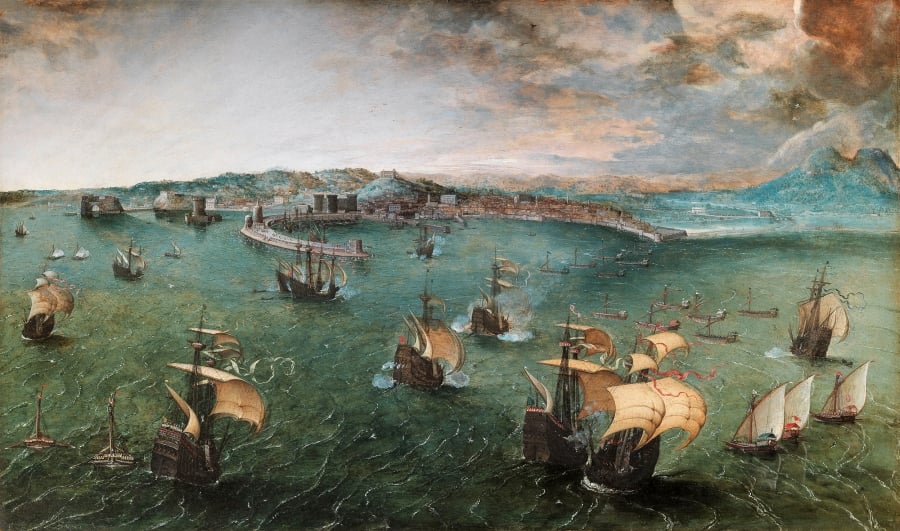
Pieter Bruegel the Elder, View of the Bay of Naples (circa 1562). Courtesy of the Galleria Doria Pamphilj, Rome.
“Bruegel” is at the Kunsthistorisches Museum Wien, Maria-Theresien-Platz, Vienna, Austria, October 2, 2018–January 13, 2019.
Follow artnet News on Facebook:
Want to stay ahead of the art world? Subscribe to our newsletter to get the breaking news, eye-opening interviews, and incisive critical takes that drive the conversation forward.
SHARE
Article topics

